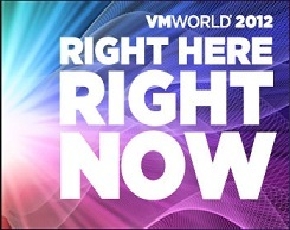Software defined datacentres, cloud management and automation, virtualisation licensing, mobile virtualisation, heterogeneity and the need for IT executives to develop new skills in the cloud era were some of the themes of the VMworld Europe 2012 conference.
"Cloud is a disruptive technology," said VMware's new chief executive Pat Gelsinger, in his opening keynote, setting the tone of the Right Here, Right Now conference, heavily focused on cloud computing's role in datacentres and its automation.

The IT industry is in a fundamental state of change, driven by cloud computing, Gelsinger said.
IT has been reactive to business needs a few years ago and it is now at a proactive state, but it needs to go one more level up, to an "inventive" stage where datacentre is managed by automation software, he added.
Today's datacentre is "like a museum of IT" comprising legacy hardware, mainframes and layers of the databases, said Gelsinger.
It is important to change how datacentres are built and operated, he added. A move towards a software defined datacentre will take the industry away from the legacy and hardware-centric infrastructure that is still in use.
Software defined datacentres
A software defined datacentre is one where all the elements of the infrastructure – including networking, storage and security – are virtualised and delivered as a service, and the control of this datacentre is entirely automated by software, according to Gelsinger.
It will enable IT departments to support both private and public cloud systems using the same management tools, he added.
Gelsinger then unveiled VMware's software defined datacentre strategy. VMware's revised vCloud Suite, which includes vCloud Automation Centre, will help IT ensure that applications such as SAP, Oracle and Microsoft SharePoint and Exchange run well on VMware systems.
"A software defined datacentre could bring a high degree of agility and flexibility to the infrastructure," said Tony Lock, analyst at Freeform Dynamics, a research and analysis company.
"But businesses may not be fully ready yet for such a transformation."
VMware also released a set of resources – called VMware Compliance Reference Architecture – including solution guides and design architectures to simplify compliance for applications in the cloud era.
VMware Mirage – running windows on iPads
Alongside cloud management, desktop management was another highlight at VMworld Europe 2012. VMware demonstrated its Mirage tool – which keeps centralised virtual copies of every end-point synchronised with the datacentre.
The tool allows the data to be held in a device-agnostic way, helping users access and share data on the devices of their choice. It deploys de-duplication over the network and in storage.
Amid the growing use of bring-your-own-device (BYOD) – or SYOM (spend-your-own-money) in VMware's words – VMware acknowledged the need for users to access data from any device. Until now, its mobile virtualisation strategy was focused on Android operating systems (OS) even though Apple iOS is more popular.
Mirage will help users upgrades from Windows XP to Windows 7, while keeping all their data and files intact. Installing Mirage also means that when a user-device is broken or stolen, the data and apps can be retrieved from the central location. It allows users to access their Windows PC on Apple iPad device via a remote access client.
But VMware's support for Apple iOS didn't end there.
Horizon Suite
It also unveiled Horizon Suite to help IT executives manage workspace apps on consumers' mobile devices – including Apple iPhones. The suite includes tools such as Horizon Application Manager, Horizon Data (previously called Project Octopus) and Horizon Mobile for iOS as its major components.
Heterogeneity
Steve Herrod, chief technology officer (CTO) of VMware said that the vCloud Director and vFabric Application Director tools will help IT manage rival virtualisation platform Microsoft Hyper-V, thus emphasising the importance and benefits of a heterogeneous IT environment.
He added that VMware has created a blueprint marketplace called the Application Management Marketplace to enable third-party software providers to add their own blueprints. The marketplace – that will be like an app store for business IT - is currently in beta stage.
Death of vRAM and even bigger 'monster VM'
VMworld Europe 2012 even had tidbits for hardcore virtualisation professionals too. Herrod reminded users that the supplier has "killed off" vRAM licensing with the release of vSphere 5.1.
The erstwhile licensing policy set licensing levels at lower RAM limits, forcing users to buy more licences and spend more money.
Following an uproar from customers, VMware raised the vRAM limits per licence but the limited increase did not go down well either. It finally axed the much-maligned scheme at VMworld 2012.
Separately, virtualisation product vSphere 5.1 will feature a more expanded "monster VM". Version 5 of vSphere, introduced last year, had the monster VMs or virtual machines with huge memory capability. Version 5.1 features even larger virtual machines – "more muscular monster VMs" – up to 64 vCPUs per VM and 1TB of vRAM.
Experts also emphasised that IT executives need to become brokers of services for the cloud.
"IT professionals need to move away from being IT builders to IT service brokers in this cloud age," Ramin Sayer, VMware vice-president for cloud and virtualisation management products, told ComputerWeekly, reiterating Gelsinger's message at the event.





